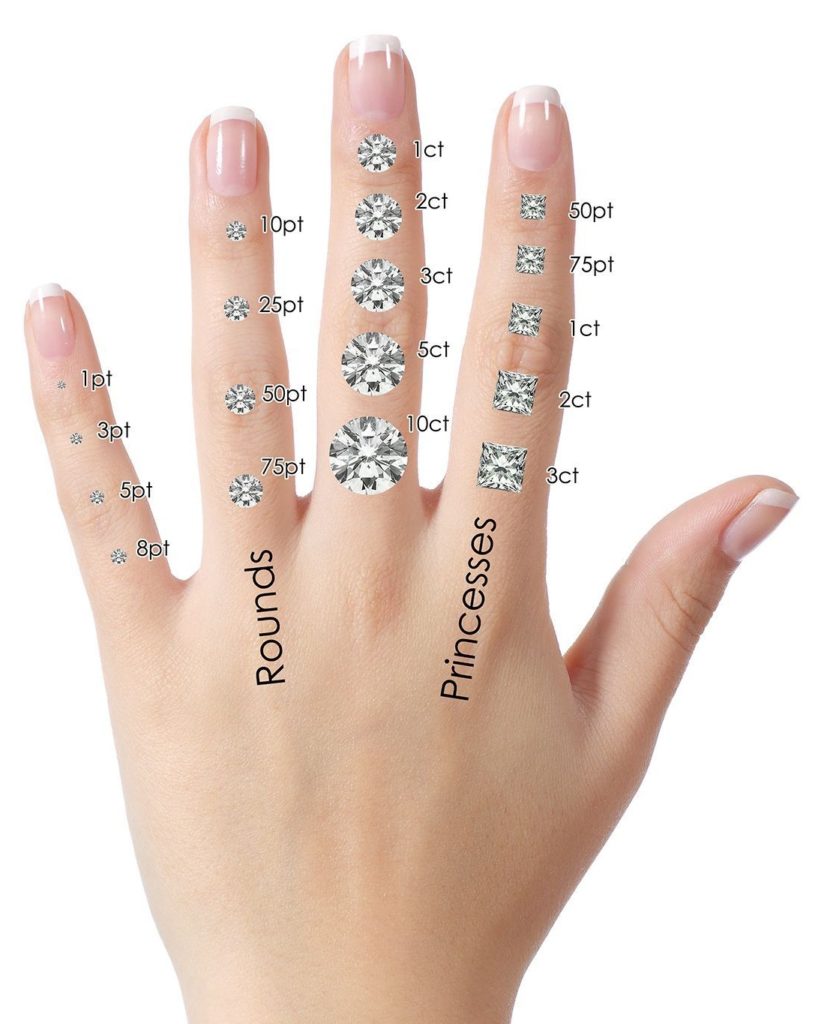Diamond Education
Education
The 4 C’s of Diamonds are Cut, Color, Clarity and Carat Weight.
A Diamond is a mineral made of carbon that is crystallized. In fact, a diamond is more than 99.95% pure carbon. The remaining 0.05 percent of the elements often influences the crystal’s color and shape. The diamond is also, by far, the hardest natural substance known to man. Diamonds form between 75 and 120 miles below the earth’s surface. The first diamond mines were discovered in India before 500 BC. India has been the world’s major supplier of diamonds for over 2,000 years, producing some of the most famous diamonds.
Certification is the key to selecting a quality diamond at the lowest price. Certification is your only assurance of quality. A diamond certification is a detailed diamond quality report issued by an accredited independent gemological laboratory. The most recognized gemological laboratories that provide certification are European Gemological Laboratory, EGL, Gemological Institute of America, GIA, and American Gem Society, AGS.
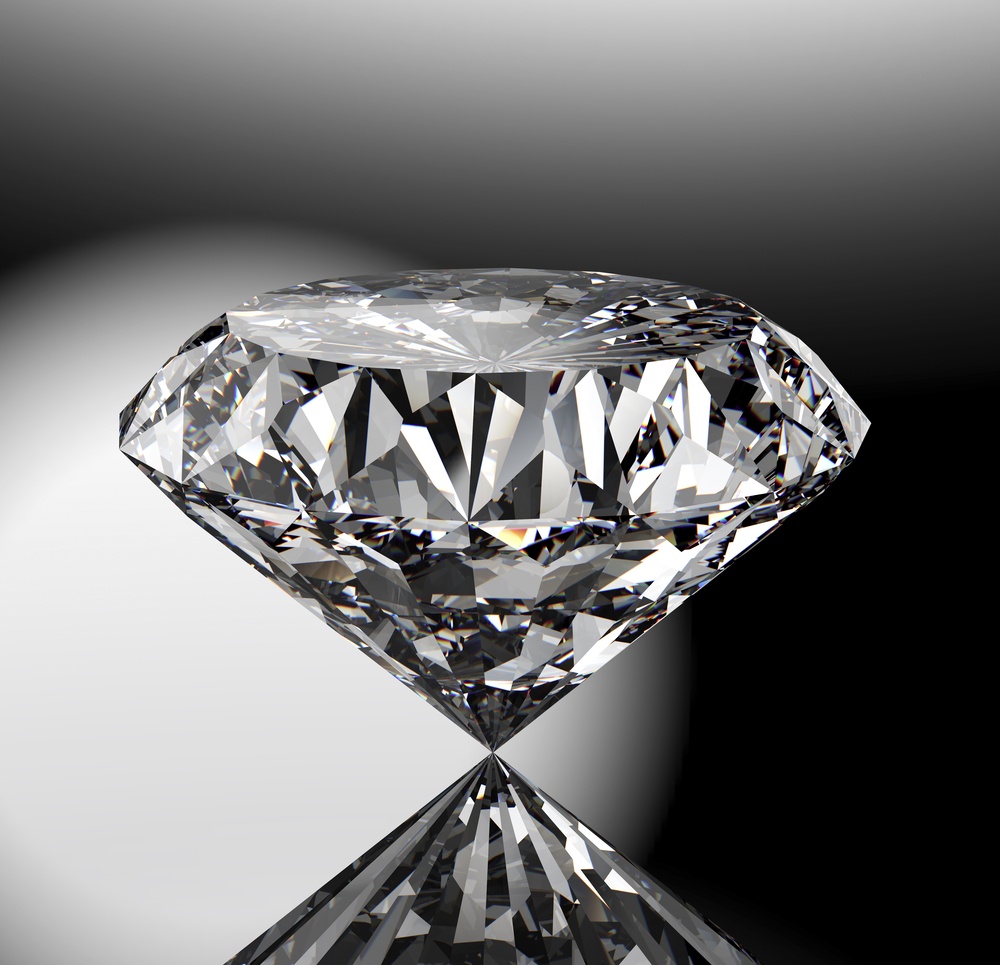
Diamond Cut
Diamond cut is important in both shape and depth. The diamond shape is mostly about personal preference with the round diamonds being the most popular representing about 75% of all diamonds sold. The diamond depth was not determined to be of much importance until 1919 when a mathematician named Marcel Tolkowsky used numerical formulas to achieve the modern brilliant cut. He did this by cutting a diamond so that all light entering the stone followed a controlled path to exit the top of the diamond. It was this discovery that lead to the quality and brilliance in diamonds that we enjoy today.
Shallow Cut Diamonds
When a diamond is cut too shallow, brilliance is lost and the diamond appears watery, glassy and dark. Looking from the top, it appears to be much larger than it really is. This is called a “fish-eye” or sometimes a “swindle cut,” so called because you can take a diamond of .80 ct with this type of spread cut and make it appear as a 1.00ct diamond. Some people are fooled into thinking that they are getting a larger diamond for the money.
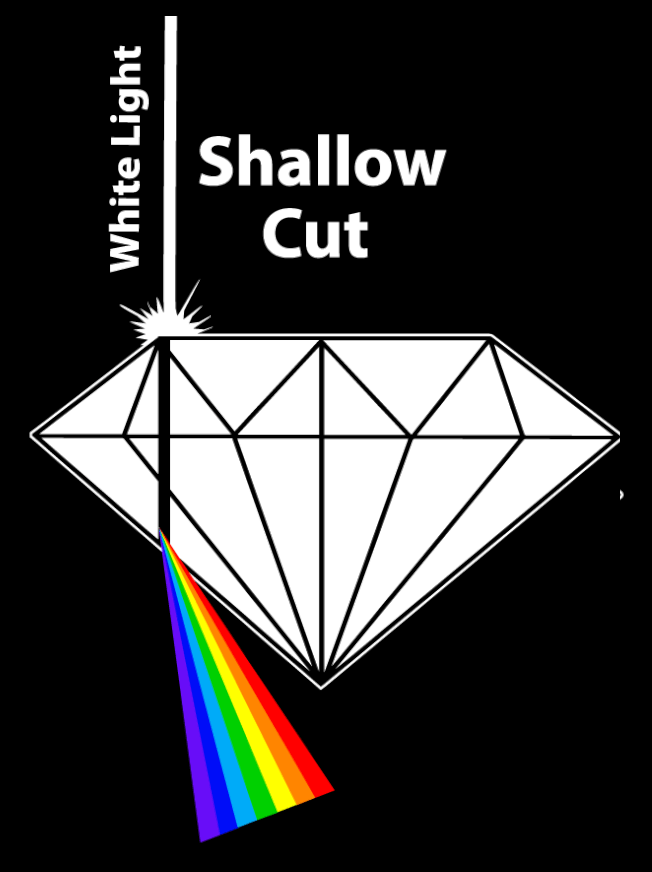
Deep Cut Diamonds
When a diamond is cut too deep it looses light out of the bottom. The center of the diamond will appear dark. In this image the light is exiting the side of the diamond. This is because the stone is too deep and the light is not being controlled to go out the top. Some diamonds are cut to have maximum weight rather than maximum beauty. This is an example of that kind of diamond and the effect this cutting has on the beauty. Some people are fooled into thinking that they are getting a better diamond simply because the carat weight is higher, but at the expense of brillance and beauty.
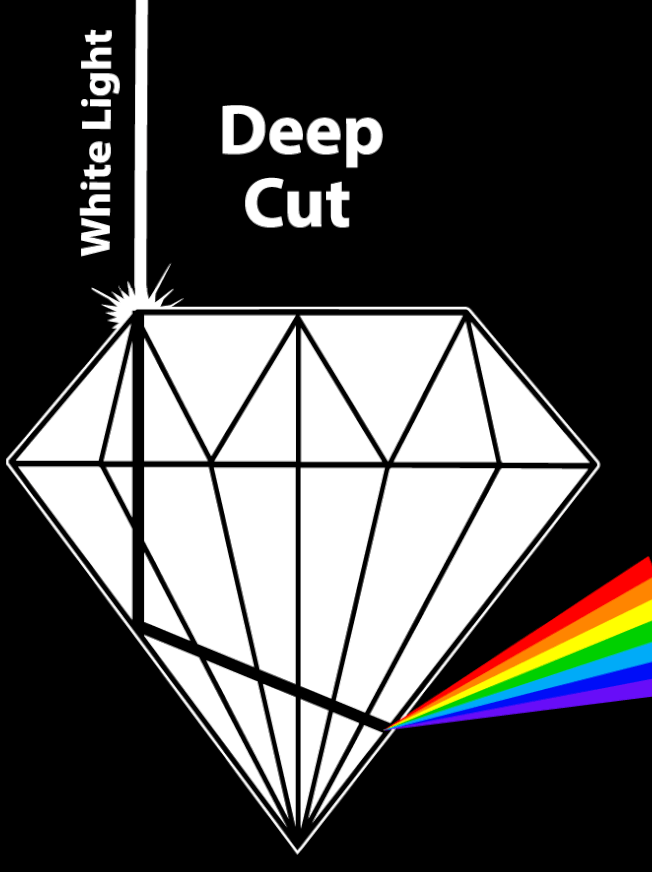
Ideal Cut Diamonds
When a round brilliant diamond has been cut to precise angles and proportions, with superb symmetry and polish, visual patterns begin to emerge. A well-cut and well-proportioned diamond allows the maximum amount of light to enter, reflect and return to your eye. The nice reflection and sparkle are also called the “fire of the diamond.” In this image, you can see that the light is going in the top, traveling around the diamond interior and exiting out the top of the stone. No matter where the light enters this diamond, the light will go out the top. This is a brilliant and beautiful stone. Ideal cut diamonds are always more beautiful!!!
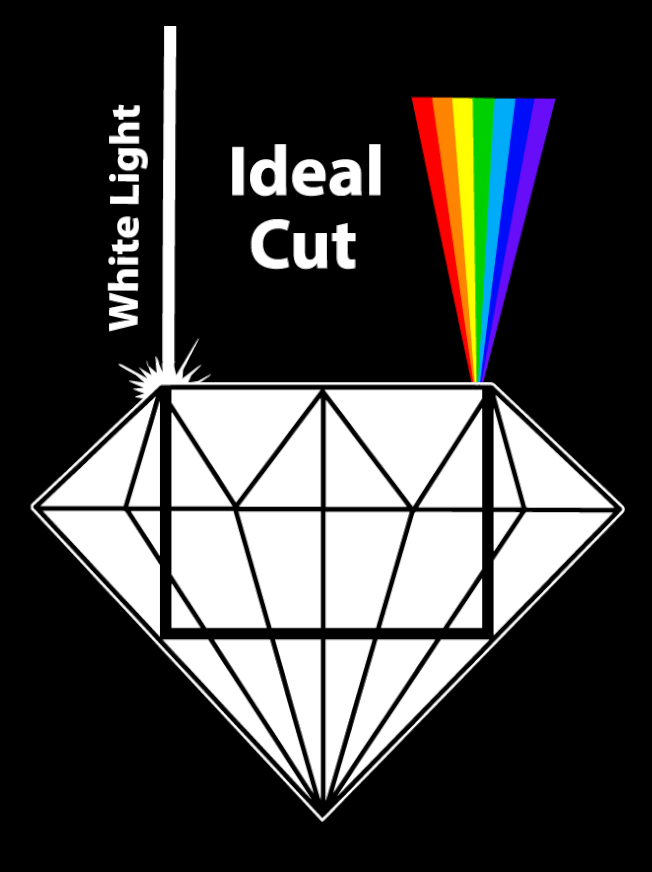
Diamond Color
Most diamonds, although appearing colorless, actually have slight tones of yellow or brown. As the tones become more apparent, the rarity and the cost decrease. The most widely used color grading system is the one developed by GIA, which identifies colors with alphabetical letters ranging from D (colorless) to Z+ (a diamond with a light yellow or brownish shade). Stones with a grade from D to J are sometimes referred to as white diamonds.
Many of these color distinctions are subtle and are nearly invisible to the untrained eye. These slight differences make a difference in diamond quality and price. For example, the nuances of color are so fine between the grades that the average consumer cannot tell the difference between a D and F color. However, the price difference between D and F color diamonds many be as much as a 10% to 20%, depending on their size and clarity. The GIA color grading scale below applies only to white diamonds and not to fancy color diamonds.
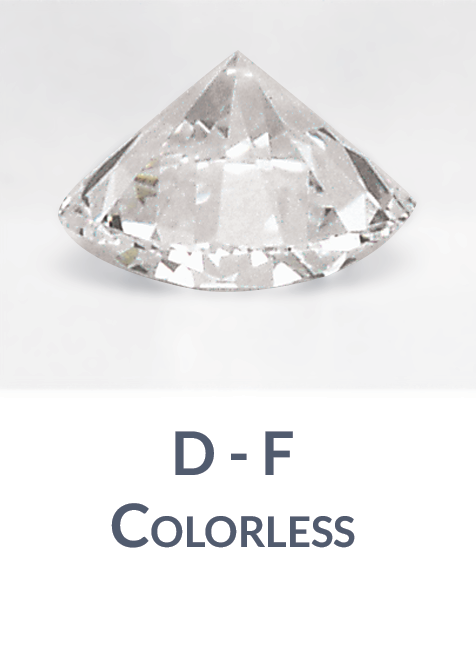
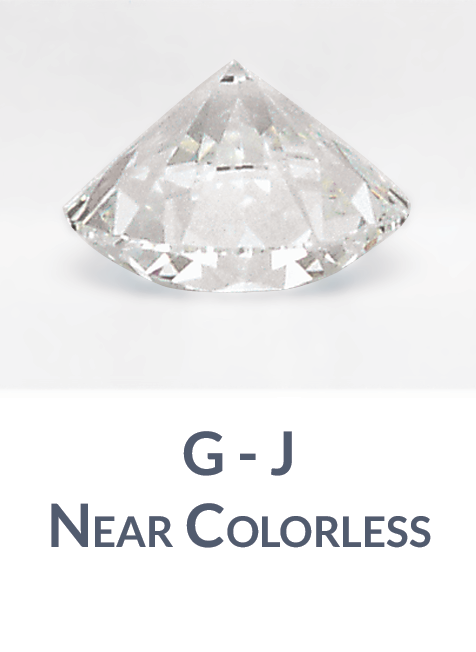
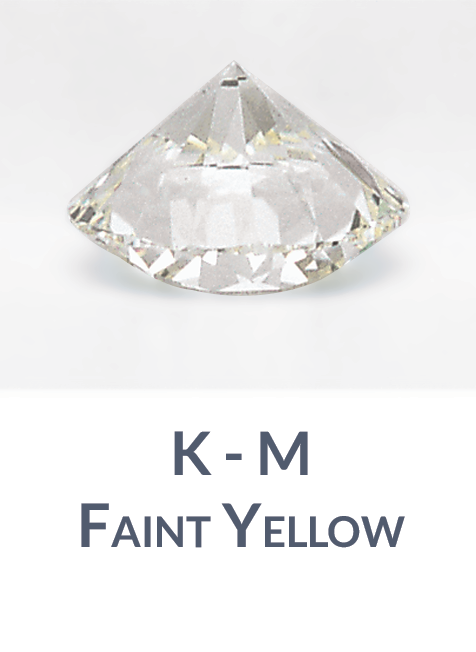
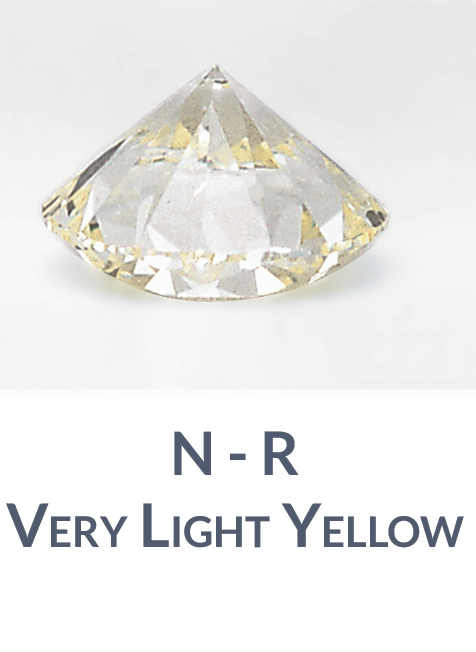
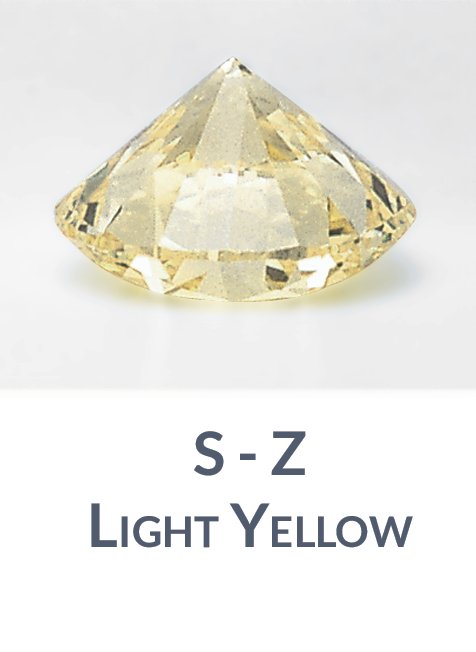
Diamond Clarity
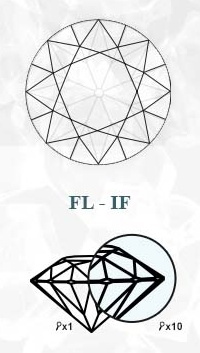
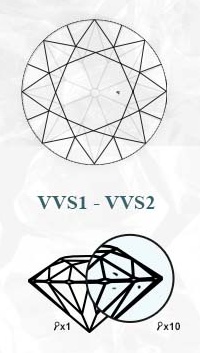
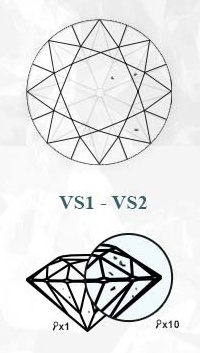
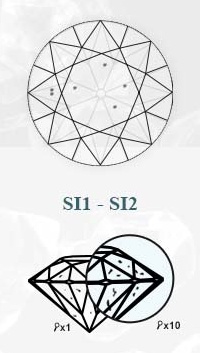
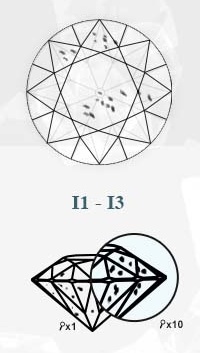
Diamond Clarity Categories
The GIA diamond grading scale is divided into six categories and eleven grades.[1] The clarity categories and grades are:
- Flawless (FL) diamonds have no inclusions or blemishes visible under 10x magnification.
- Internally Flawless (IF) diamonds have no inclusions visible under 10x magnification, only small blemishes on the diamond surface.
- Very, Very Slightly Included (VVS) diamonds have minute inclusions that are difficult for a skilled grader to see under 10x magnification. The VVS category is divided into two grades; VVS1 denotes a higher clarity grade than VVS2. Pinpoints and needles set the grade at VVS.
- Very Slightly Included (VS) diamonds have minor inclusions that are difficult to somewhat easy for a trained grader to see when viewed under 10x magnification. The VS category is divided into two grades; VS1 denotes a higher clarity grade than VS2. Typically the inclusions in VS diamonds are invisible without magnification, however infrequently some VS2 inclusions may still be visible. An example would be on a large emerald cut diamond which has a small inclusion under the corner of the table.
- Slightly Included (SI) diamonds have noticeable inclusions that are easy to very easy for a trained grader to see when viewed under 10x magnification. The SI category is divided into two grades; SI1 denotes a higher clarity grade than SI2. These may or may not be noticeable to the naked eye.
- Included (I) diamonds have obvious inclusions that are clearly visible to a trained grader under 10x magnification. Included diamonds have inclusions that are usually visible without magnification or have inclusions that threaten the durability of the stone. The I category is divided into three grades; I1 denotes a higher clarity grade than I2, which in turn is higher than I3. Inclusions in I1 diamonds often are seen to the unaided eye. I2 inclusions are easily seen, while I3 diamonds have large and extremely easy to see inclusions that typically impact the brilliance of the diamond, as well as having inclusions that are often likely to threaten the structure of the diamond.
Diamond Carat
The weight of a diamond is measured in carats. One carat is divided into 100 parts called “points,” 1 ct. = 1.00; 1/2 ct. = 0.50. The value of two diamonds of the same weight can vary greatly depending on the color, clarity and especially the cut. While larger diamonds are highly prized, diamonds of equal size may vary widely in value and brilliance, depending on their quality of clarity, cut, and color.
Diamond price increases dramatically as carat weight increases. Thus the price of two carat diamond ring is more expensive that two carat multiple diamonds in a ring. The reason for this is the rarity of bigger pieces of diamonds compared to the smaller pieces. In fact, only one out of one million (more or less) mined diamonds can create a one carat diamond that is fully cut and polished. Another reason is the wastage during the cutting and polishing process that averaged between 40-60 percent of the original carat weight. Because of rarity of larger diamonds and the effect that rarity has on price, less than one percent of all women will ever own a diamond weighing one carat or more. Note: don’t confuse carat with karat, as in “18K gold,” which refers to gold purity on a scale of 1K to 24K.
Diamond Carat Chart
